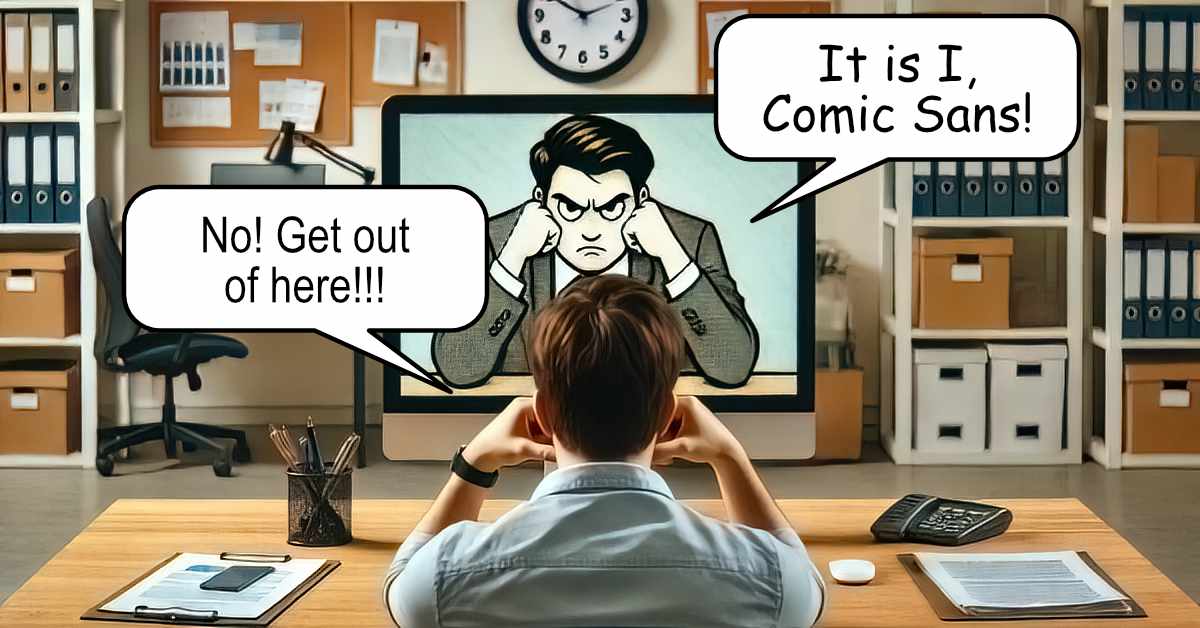Why Comic Sans is the World's Most Hated Font (And What to Use Instead)

Ah, Comic Sans—the font we love to hate. It’s almost legendary in the design world for sparking debates and rants among graphic designers. But why does Comic Sans get so much flak, and is there a place for it in our world at all? Let’s dive into a little history, understand the reasons behind the font’s unpopularity, and explore some more designer-friendly alternatives.
The Origin Story of Comic Sans
Comic Sans was created in 1994 by Vincent Connare, a designer working at Microsoft. The font was inspired by the playful, hand-drawn text in comic books, like those featuring Batman and Watchmen. Connare designed Comic Sans for use in Microsoft Bob, a user-friendly interface for novice computer users. Although it didn’t make it into Microsoft Bob, it was included in Microsoft’s font library and went on to become one of the most recognizable typefaces in the world.
Why Graphic Designers Cringe at Comic Sans
Despite its popularity with the general public, Comic Sans is like nails on a chalkboard to many designers. Here’s why:
Overuse and Misuse: One of the biggest issues with Comic Sans is that it’s often used inappropriately. From formal invitations to business presentations, the font has appeared in places that demand a more serious or polished tone (I’m not sure why Comic Sans was even considered for these scenarios). This widespread misuse gives the impression that it lacks professionalism.
Design and Aesthetic Issues: Comic Sans has an uneven, childlike quality that makes it difficult to take seriously in most contexts. The rounded and exaggerated characters can feel amateurish, clashing with designs that aim for sophistication or elegance.
Association with Childishness: Because of its playful nature, Comic Sans is commonly used in materials for children, making it difficult for the font to break away from its juvenile image. When used in adult or professional settings, it just feels wrong.
Alternatives That Designers Prefer
If you’re tempted to use a friendly, approachable font but want to avoid the wrath of design purists, consider these alternatives:
- Raleway: A modern and elegant sans-serif font with a playful side. It has a wide range of weights, making it versatile for both casual and professional use.
- Poppins: This geometric sans-serif font has clean, rounded edges that give off a friendly vibe without sacrificing polish. It works well in both digital and print designs.
- Montserrat: Inspired by the signage of old Buenos Aires, Montserrat is a stylish sans-serif font that feels approachable yet refined. It’s a fantastic choice for websites, social media graphics, and more.
- Comic Neue: If you love the concept behind Comic Sans but want a more refined version, try Comic Neue. It maintains the playful, comic-inspired feel but with improved proportions and aesthetics.
Is There Ever a Place for Comic Sans?
Believe it or not, Comic Sans isn’t entirely useless. It can be effective in contexts that require a light-hearted or whimsical tone, such as children’s books, playful event posters, or materials for people with dyslexia. Yes, Comic Sans is more readable for dyslexic individuals because of its irregular letter shapes, which can help differentiate characters more easily.
Final Thoughts
The backlash against Comic Sans is a reminder of how powerful typefaces can be in shaping perceptions and emotions. While it’s important to respect a font’s intended use, we shouldn’t shy away from experimenting—as long as we understand the message we’re trying to convey. For designers, choosing a font that complements the tone of a project is crucial, so if you’re ever tempted to use Comic Sans, take a moment to explore the wonderful world of more refined (and respected) alternatives.
What’s your take on Comic Sans? Have you found any fun or surprising uses for it, or are you firmly in the “never touch it” camp? Let me know in the comments below!






0 Comments